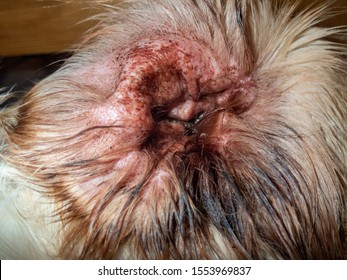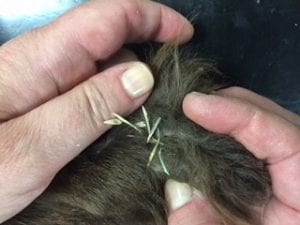So, if you read the previous articles, now we know something about your pet’s eyes.
Now, let’s move up. How about the ears? What are some alarming signs that you should have in mind ?

One of the most signs of dog ear infections are whining, shaking the head, and pawing at the ears as your dog is trying to stop the pain. If you notice this behaviour inspect the ears, however, you may find they smell or have a discharge. That’s common with ear infections.
The most problems occur at the dog’s external ear canal, as it is longer and more vertical than a human’s, making it easier for something like water to make it into the ear canal and stay there. Furthermore , a dog’s ear canal is lined with skin and contain glands and hair follicles (just like the skin on the outside of its body), making its ears prone to the same kind of irritants that affect its paws, legs, back and head, said Dr. Christine Cain, DVM and assistant professor at the University of Pennsylvania School of Veterinary Medicine Dermatology & Allergy Service.

There are many ear infections and symptoms of Ear Problems in Dogs
Bacterial Ear Infections

Some ear problems in dogs are caused by a bacterial infection, known as otitis externa. This is one of the most common ear problems in dogs that we treat. The symptoms of a bacterial ear infection are easy to spot so if your dog is suffering from this you might notice:
- Shaking of the head
- Excessive scratching at ears and around head
- A smell from the ears and occasionally discharge
- Reluctance to let you near its head
- Aggressiveness if the affected area is touched
Once diagnosed , can be treated by cleaning the ears and supplying a prescription medication, often antibiotic ear drops of tablets.
Ear Mites

Another common ear problem that we come across with our canine patients are ear mites also known as Otodectes cynotis. If your dog is suffering from ear mites you may notice some or all of the following symptoms:

- Shaking of the head
- Excessive scratching at ears and around head
- Brown particles which look like coffee grains just inside your dog’s ear
- Black or brown waxy secretion
Further complications could result in blood pooling as blood vessels in the ear can fail due to scratching and shaking of the head.
Foreign Objects (like grass seeds)
This is usually a seasonal problem occurring during the summer months when they have been playing in long grass. The seeds have a sharp tip that pierces the skin getting lodged and causing irritation.

Symptoms:
Vigorous scratching of the ears
- Shaking of the head
- A collection of seeds in or around the ear
- Inflammation in or around the ear
If the seed has become inflamed you may also notice a small amount of blood in your dog’s ear.
Next post: How to treat ear infections in dogs?
